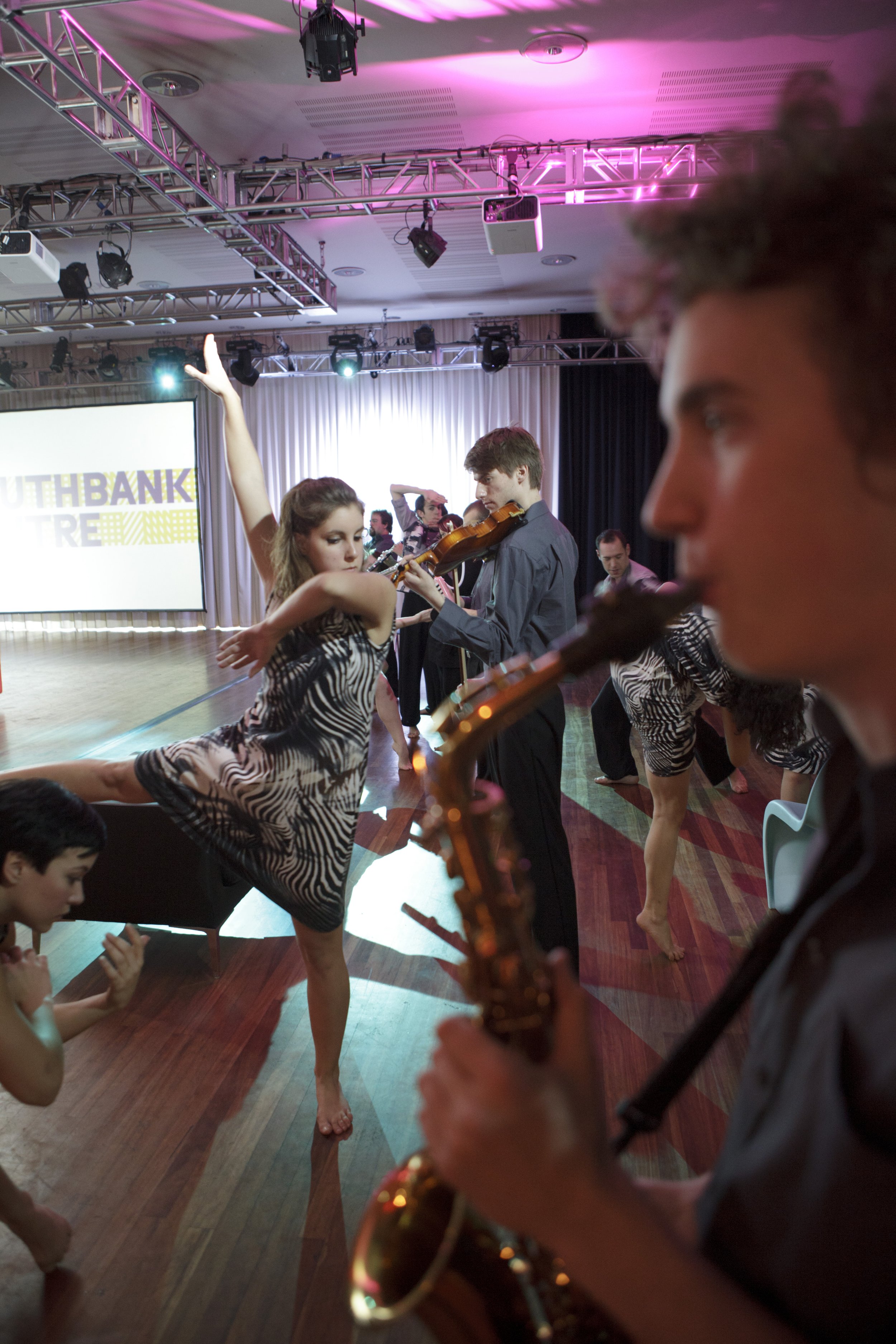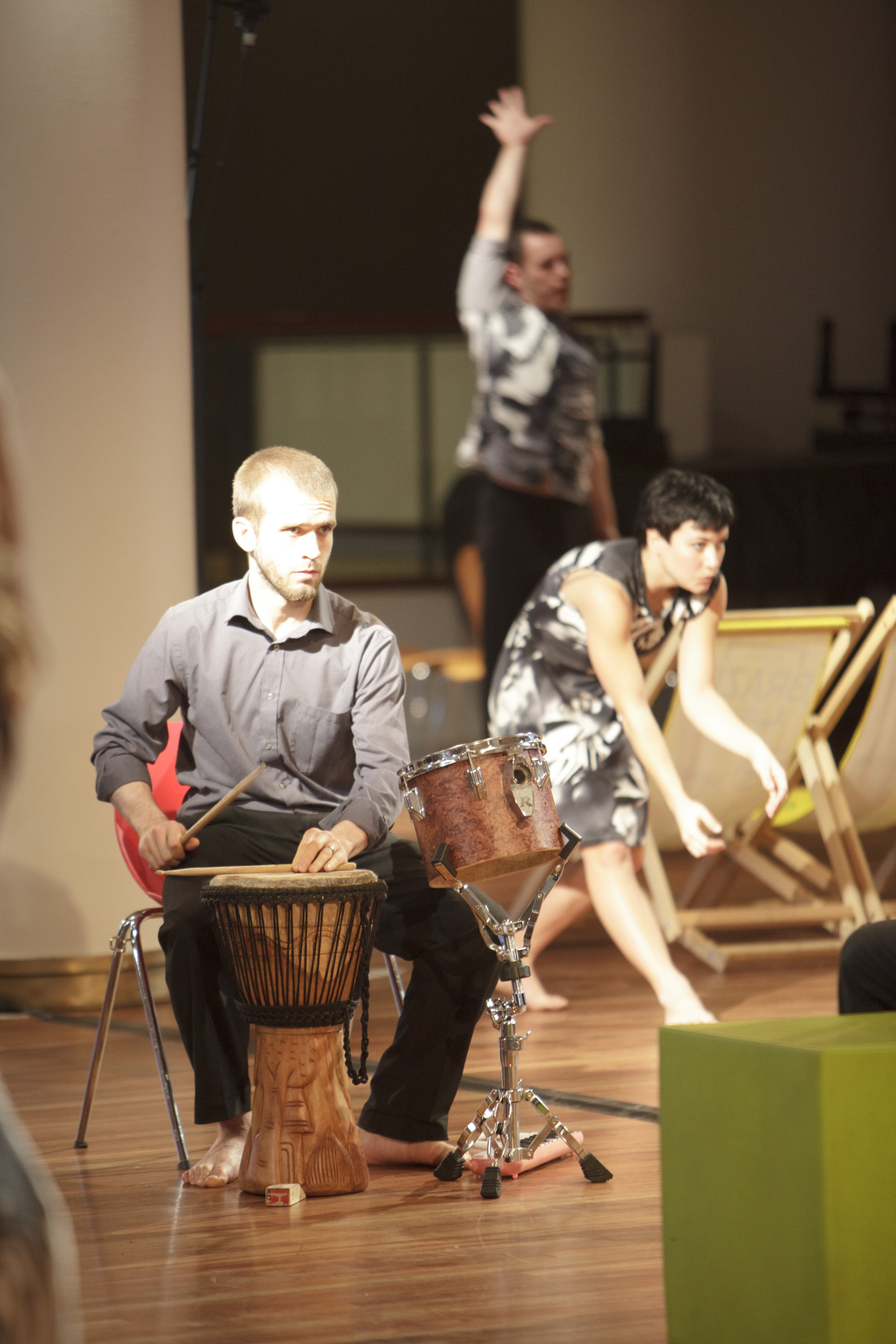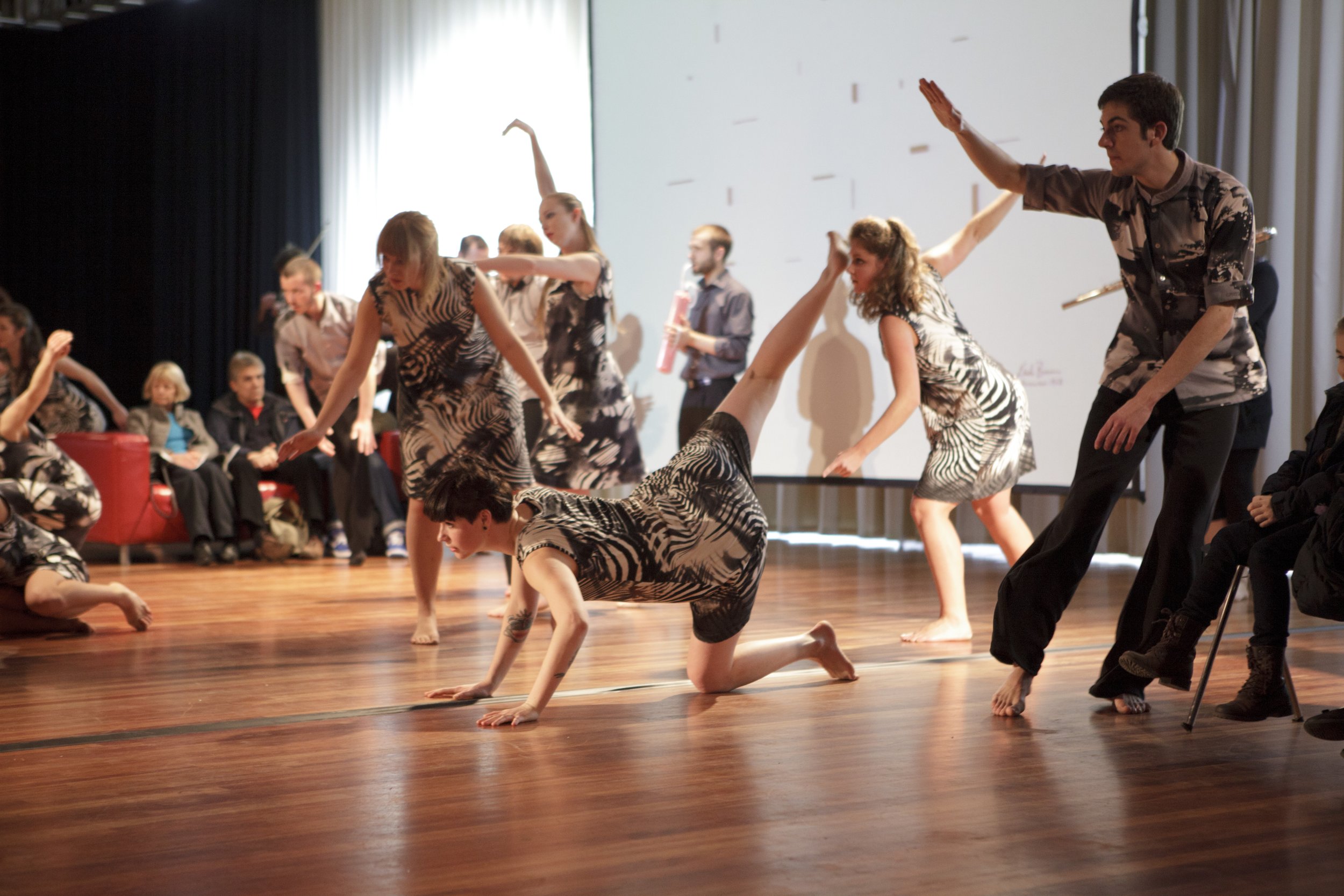
December 1952
As part of the Move: Choreographing You event at Southbank Centre in January 2010, December 1952 brought the conceptual world of Earle Brown’s groundbreaking graphic score to life. This performance, originally introduced at Chelsea Space in October 2009, transformed Brown’s abstract visual composition into a dynamic, collaborative performance that explored the interplay between dance, music, and space.
Earle Brown’s December 1952 is one of the first graphic scores, featuring 33 black rectangles of varying sizes arranged on a white page, with no instructions on how to interpret or perform it. This open-ended nature became the foundation for a unique process where dancers, musicians, and the performance environment interacted in a constantly evolving dialogue. At Chelsea Space, the score materialized as a chalk drawing on the floor, evolving over three days. At the Southbank Centre, the score was reimagined with chairs arranged in The Clore Ballroom, inviting performers and audiences alike to experience the fluid relationship between movement, sound, and space.
The project featured an ensemble of dancers, musicians, and artists, including Paul Bevan, Angela Blumberg, Helka Kaski, Lizzi Kew Ross, and The Post String Quartet, with choreography by Lizzi Kew Ross devised alongside dance artists Helka Kaski, Angela Blumberg, and Genevieve Giron. Directed by Cally Spooner at Chelsea Space, the performances unfolded as a collaborative conversation, each translation of Brown’s score offering a new interpretation and experience.
December 1952 invited audiences to witness how a visual score could transform into a living, breathing performance, where movement, sound, and space converged to create an immersive and ever-changing artistic experience.
Choreography - Lizzi Kew Ross, devised with dance artists Helka Kaski, Angela Blumberg and Genevieve Giron
Directed by - Cally Spooner
Costume designer - Berit Laageide
Lighting designer - Karsten Tinapp
Artists, Musicians and Dancers (Chelsea Space) - Paul Bevan, Angela Blumberg, Alice Cahnner, Tania Chen, Genevieve Giron, Helka Kaski, Lizzi Kew Ross, Ian Mitchell, Andrew Morgan, Nancy Ruffer, David Ryan, Will Stuart, and The Post String Quartet.
Artists, Musicians and Dancers (Clore Ballroom) - Sarah Armstrong, AJ Brinkman (bass guitar), Anna Bergstrom, Karolin Bertilsson, Angus Finlayson, (violin)=, Zoe Georgallis, Adam Gillick, Camille Giraudeau, Sarah Gully, Kyle Hall, Verity Holloway, Liam Mattison (clarinet). Ryan Phur, Cara Richardson, Aled Start (percussion) Will Scott (saxophone), Ella Thiele
The three-dimensional sensation of the score seemed uppermost in Earle Brown’s notebook:
‘…to have elements exist in space…space as infinitude of direction from infinitude of points in space…to work (compositionally and in performance) to right, left, back, forward, up, down and all points in-between…a performer must set all this in motion (time which is to say, realise that it is motion and step into it…’
Performance at Chelsea Space
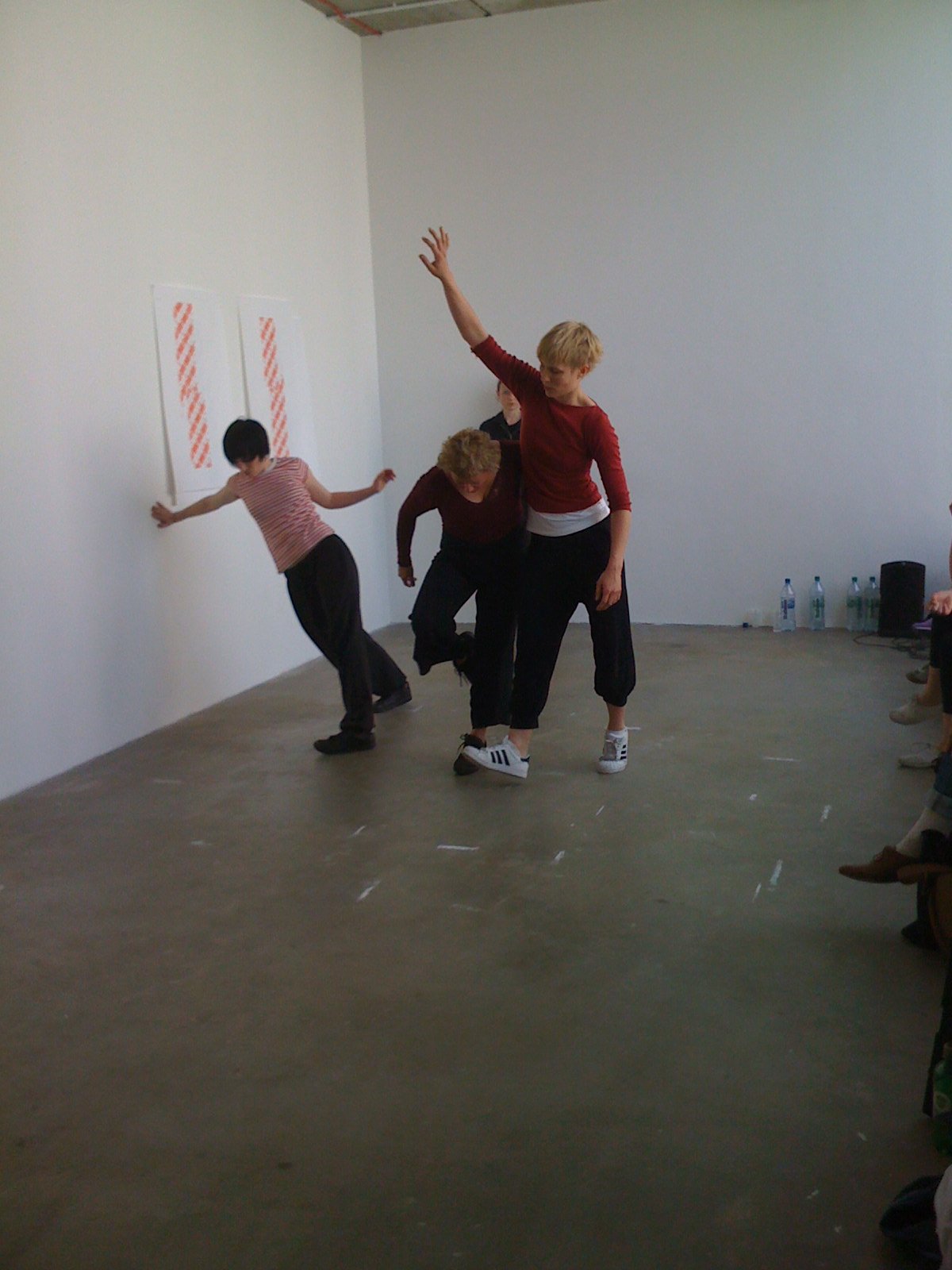
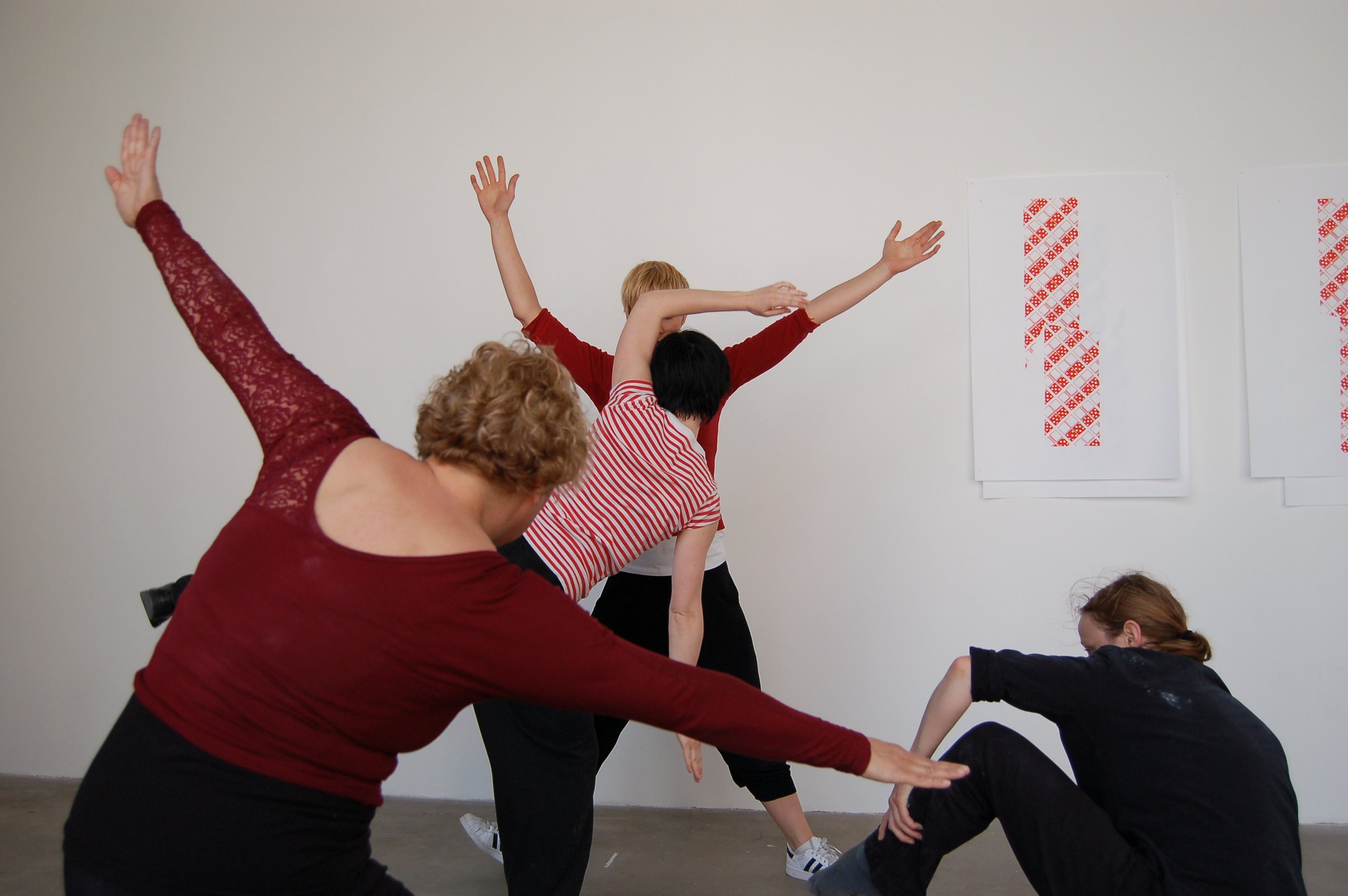
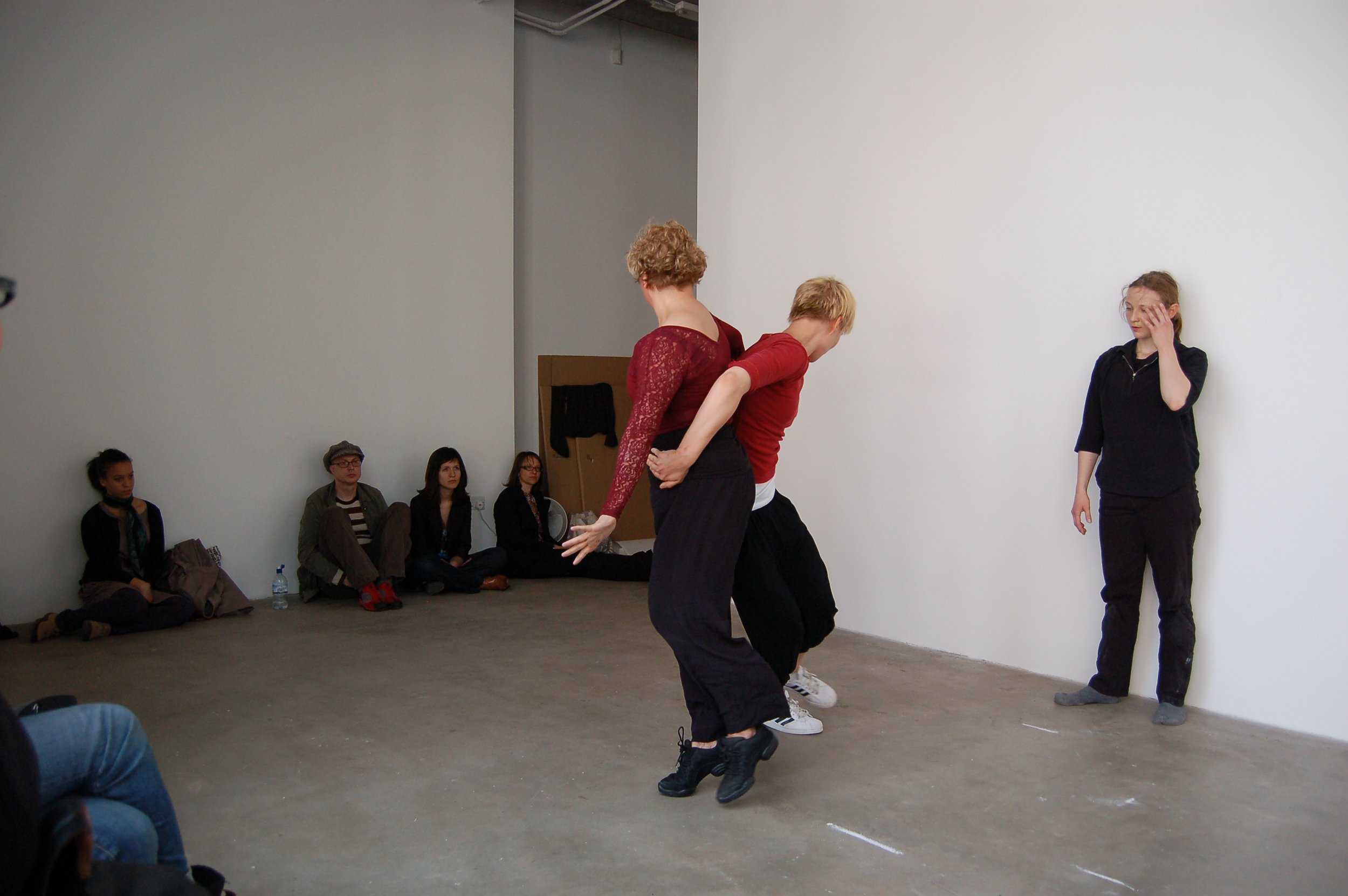


Performance at Clore Ballroom, Southbank Centre

